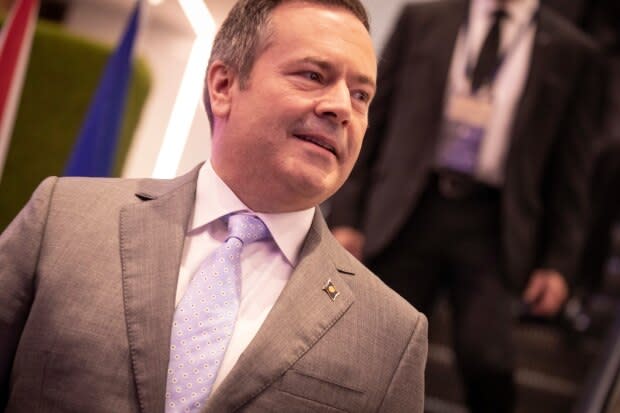ANALYSIS | The political science of the 'fair deal' panel

On Saturday, Nov. 9, Alberta Premier Jason Kenney delivered a bombshell announcement.
He was appointing a "fair deal" panel, led by former Reform Party founder Preston Manning and eight other conservatives (including three UCP MLAs), "to define and to secure a fair deal for Alberta.
"The panel will also look at how best to advance the province's vital economic interests, such as the construction of energy pipelines."
In particular, the panel is to explore the feasibility of establishing a provincial tax collection agency (replacing Revenue Canada), a provincial pension fund (replacing the Canadian Pension Plan), a provincial police force (replacing the RCMP), and other measures designed to generate more autonomy for Alberta within Canada.
It is to issue a report to the Kenney government by March 2020.
Reformulation of Alberta's place in Canada
Many, but not all, of these proposals are in provincial jurisdiction and could be implemented unilaterally by Alberta.
In addition, many of these proposals replicate programs that Quebec has. But it would also entail duplication and substantial additional costs for Albertans.
Moreover, if these ideas are fully implemented, it would mean a complete reformulation of Alberta's place in Canada. It could also lead to other provinces adopting similar policies resulting in a substantial fracturing of Canada.
However, it is also possible that the panel is simply a negotiating tactic, like the threatened referendum of the federal equalization program, to give Kenney leverage in dealing with the Trudeau government on a host of major policy differences, including the Trans Mountain Pipeline expansion, the federal carbon tax backstop and Bills C-69 and C-48.
It seems so sudden.

In 2001, the Alberta Agenda — more commonly referred to as the Firewall Letter — was presented to Premier Ralph Klein by a group of prominent conservatives, namely Stephen Harper, Ted Morton, Tom Flanagan, Rainer Knopff, Andrew Crooks and Ken Boessenkool.
Although Klein rejected the Firewall Letter, its ideas have continued to be studied and talked about in Alberta conservative circles.
However, while the UCP's election platform had 118 pages of detailed proposals, the Firewall ideas were absent.
Likewise, Kenney did not mention them in the first six months of the UCP government.
What changed? How did asserting Alberta's autonomy within Confederation get on the Kenney government's agenda?
Multiple streams model
Applying political scientist John Kingdon's multiple streams model can help observers make sense of the rapid emergence of the "fair deal" panel.
Kingdon identified three independent streams — problems, policies and politics — that come together to create a policy window. A policy window is opened, briefly, for policy entrepreneurs who happen to be skilful and lucky enough to be able to exploit them before the window closes.
Examples of successful policy entrepreneurs are former prime minister Brian Mulroney, who achieved a free trade agreement with the United States, and former foreign affairs minister Lloyd Axworthy, who successfully completed an anti-personnel land mines treaty.
The problem stream
The problem stream consists of objective indicators of a serious problem but also requires a focusing event to push them onto the government's agenda.
In this case, it is a multi-year economic downturn and a belief by many Albertans that other provincial governments, and especially the Trudeau government, are deliberately hindering Alberta's recovery efforts.
A related problem was the re-election of Trudeau, who was opposed by 84 per cent of Alberta voters and the UCP government. Trudeau's re-election resulted in a spike in separatist sentiments in Alberta.
Kenney's panel was designed to blunt the rising consideration of Alberta separating from Canada by changing the channel to how to increase Alberta's autonomy within Canada.
The policies stream
The policies stream consists of ideas about policy alternatives that circulate in communities of specialists, both inside and outside of government.
The process of creating alternatives for policy-makers to consider proceeds independently of the process of problem identification. However, viable alternatives must exist before a problem can secure a solid position on the decision agenda.
All of the ideas to be considered by the panel have been circulating among Alberta conservatives for decades.
The politics stream
The politics stream is composed of elements related to the electoral, partisan and pressure group considerations of politicians and those who serve them.
Turnover and jurisdiction within government are also important, in as much as agendas are significantly affected by changing incumbents and by bureaucratic turf battles.
The election of a new government, such as the April 2019 election of Kenney, created a political opportunity to revisit the proposals to make Alberta more autonomous. The previous Notley government would never have put forward the Firewall 2.0 proposals.
The re-election of Trudeau is a second element within the politics stream. Firewall 2.0 would not have been introduced if Andrew Scheer and the Conservatives had formed the federal government.

Strong partisan tinge
There is, in fact, a strong partisan tinge to both the Firewall 1.0 and Firewall 2.0 proposals.
Firewall 1.0 emerged in the aftermath of the Chretien Liberals winning a third straight majority government in 2000. Yet, when Stephen Harper became prime minister in 2006, he quickly ignored the initial Firewall Letter that he had signed. Now that the federal Liberals have been re-elected, Firewall 2.0 could be introduced.
Firewall 2.0 emerged because of the confluence of problems, policies and politics.
The problem is Alberta's economic situation and accompanying separatist sentiment, but there are also a set of policies that can be used to solve the problem. At the same time, the political situation has changed with the election of Kenney and re-election of Trudeau. Combined, these factors created a policy window.
The question now is whether Kenney, like Mulroney and Axworthy, is a skilled enough policy entrepreneur to exploit the policy window before it closes. Or whether, like Ralph Klein's with his "third way" on health care or Ed Stelmach and his royalty review, Kenney misses the policy window and falls through the trapdoor of disaster.


